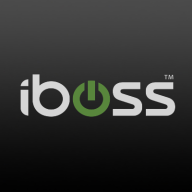


Akamai Enterprise Application Access and Symantec CloudSOC CASB compete in cloud security and application access solutions. Akamai stands out for its competitive pricing, while Symantec excels in feature-rich offerings.
Features: Akamai Enterprise Application Access offers robust authentication, secure application access, and real-time security updates. Symantec CloudSOC CASB provides extensive data protection, user behavior analytics, and enhanced visibility and control over cloud applications.
Ease of Deployment and Customer Service: Akamai's deployment is straightforward, supported by responsive customer service, making it accessible for various businesses. Symantec's implementation may be complex but is well-supported by thorough documentation and responsive service.
Pricing and ROI: Akamai presents a cost-effective solution with efficient resource use, offering good ROI due to lower setup costs. Symantec requires a higher initial investment but delivers significant ROI through advanced features and long-term security benefits.


iboss offers a comprehensive security platform designed for diverse use cases such as web filtering, data loss protection, corporate proxy services, and URL filtering.
iboss integrates advanced features to address dynamic security needs, leveraging its strength in SASE, ZTNA, AI initiatives, and cloud integration, while ensuring seamless operations for remote work. It excels in historical forensics, malware protection, and flexible cloud deployments. Users benefit from comprehensive traffic scanning, robust malware detection, and PaaS capabilities that reduce hardware management. An intuitive admin console ensures efficient management with content filtering and low false positives. SSL decryption enhances security, while DLP protects data in AI conversations. Deployment is rapid and scalable, allowing effortless integration with emerging technologies.
What features does iboss offer?
What benefits and ROI should users consider?
iboss finds significant application in sectors such as education, where web filtering for K-12 is crucial, and in corporate environments requiring robust proxy services and URL filtering for network security. Its adaptability is essential in scenarios demanding flexible, decentralized security frameworks, particularly for remote work setups.
Akamai Enterprise Application Access is a cloud-based solution that provides secure access to enterprise applications and data from any device, anywhere. It eliminates the need for traditional VPNs and allows organizations to easily manage access to applications and data for employees, partners, and customers. With its zero-trust approach, it ensures that only authorized users can access sensitive information, reducing the risk of data breaches.
Symantec CloudSOC CASB is a cloud access security broker that provides visibility and control over cloud applications and services. It offers a comprehensive set of security capabilities, including data loss prevention, threat protection, and compliance management. With CloudSOC CASB, organizations can gain insight into cloud usage patterns, identify potential risks, and enforce policies to protect sensitive data. The solution integrates with leading cloud providers, such as Microsoft Office 365, Salesforce, and Box, to provide seamless protection across multiple cloud environments.
CloudSOC CASB also offers advanced analytics and reporting capabilities, enabling organizations to monitor and track cloud usage and security events in real-time. With its user-friendly interface and flexible deployment options, CloudSOC CASB is an ideal solution for organizations looking to secure their cloud environments and protect their sensitive data.
Symantec CloudSOC CASB Key Benefits:
CloudSOC CASB provides organizations with comprehensive visibility into cloud applications and services being used across their network. It helps identify shadow IT, unapproved cloud usage, and potential security risks associated with unsanctioned applications.
CloudSOC CASB enables organizations to enforce data protection policies and prevent sensitive data from being leaked or exposed in cloud applications. It helps detect and control data sharing, implements encryption, and offers data loss prevention (DLP) capabilities to safeguard critical information.
SOC CASB enforces granular access controls for cloud applications, ensuring that users have appropriate permissions and follow secure authentication practices. It helps organizations implement strong authentication methods, single sign-on (SSO), and multi-factor authentication (MFA) to enhance access security.
CloudSOC CASB incorporates threat intelligence and behavioral analytics to detect and respond to cloud-specific threats. It helps protect against account compromises, malware, data exfiltration, and other advanced threats targeting cloud environments. Real-time alerts and incident response capabilities enable organizations to take prompt action.
CloudSOC CASB assists organizations in meeting regulatory compliance requirements and industry standards. It provides policy enforcement, auditing capabilities, and reporting functionalities to support compliance with data privacy and security regulations. This helps organizations demonstrate adherence to regulatory obligations.
CASB helps organizations identify unauthorized or risky cloud applications used by employees, offering insights into shadow IT. It enables IT teams to assess risks, enforce policies, and take appropriate actions to manage and control cloud usage effectively.
CloudSOC CASB conducts security assessments of cloud applications and services, providing insights into their security posture and potential vulnerabilities. This enables organizations to make informed decisions about the adoption of specific cloud services and assess their overall risk exposure.
We monitor all Cloud Access Security Brokers (CASB) reviews to prevent fraudulent reviews and keep review quality high. We do not post reviews by company employees or direct competitors. We validate each review for authenticity via cross-reference with LinkedIn, and personal follow-up with the reviewer when necessary.